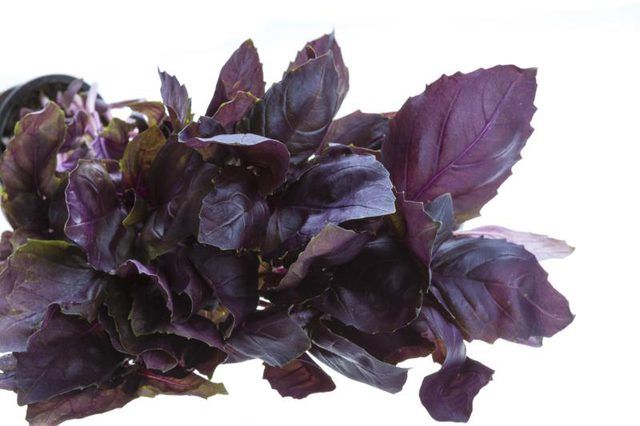Bulbs
Flower Basics
Flower Beds & Specialty Gardens
Flower Garden
Garden Furniture
Garden Gnomes
Garden Seeds
Garden Sheds
Garden Statues
Garden Tools & Supplies
Gardening Basics
Green & Organic
Groundcovers & Vines
Growing Annuals
Growing Basil
Growing Beans
Growing Berries
Growing Blueberries
Growing Cactus
Growing Corn
Growing Cotton
Growing Edibles
Growing Flowers
Growing Garlic
Growing Grapes
Growing Grass
Growing Herbs
Growing Jasmine
Growing Mint
Growing Mushrooms
Orchids
Growing Peanuts
Growing Perennials
Growing Plants
Growing Rosemary
Growing Roses
Growing Strawberries
Growing Sunflowers
Growing Thyme
Growing Tomatoes
Growing Tulips
Growing Vegetables
Herb Basics
Herb Garden
Indoor Growing
Landscaping Basics
Landscaping Patios
Landscaping Plants
Landscaping Shrubs
Landscaping Trees
Landscaping Walks & Pathways
Lawn Basics
Lawn Maintenance
Lawn Mowers
Lawn Ornaments
Lawn Planting
Lawn Tools
Outdoor Growing
Overall Landscape Planning
Pests, Weeds & Problems
Plant Basics
Rock Garden
Rose Garden
Shrubs
Soil
Specialty Gardens
Trees
Vegetable Garden
Yard Maintenance
How to Restart a Dying Basil Plant
How to Restart a Dying Basil Plant. Most herbs, including basil (Ocimum basilicum), are easy-to-grow plants that usually thrive when given some basic care and proper conditions. But sometimes a problem arises that may go undetected, causing the plant to falter and appear to be dying. Once you've identified the cause of the problem, it's often...

Most herbs, including basil (Ocimum basilicum), are easy-to-grow plants that usually thrive when given some basic care and proper conditions. But sometimes a problem arises that may go undetected, causing the plant to falter and appear to be dying. Once you've identified the cause of the problem, it's often possible to take corrective measures that can save the plant. As a last resort, you might be able to keep a dying plant going by cutting a few healthy stems and rooting them.
Not Enough Water
Basil is a sun-loving plant related to mint that produces the largest leaves in high numbers when grow in full sun. The plant also needs well-drained soil that doesn't hold water for long periods and a constant source of moisture to grow well. But strong sun tends to heat soil and can speed its drying, so if you notice leaves on basil plants are wilted but otherwise appear normal, without spots or areas of insect damage, the soil may just be too dry. Check soil moisture with a fingertip; if it feels dry, water the plants deeply.
If you've caught this problem early, the plants should revive, although you might lose a few badly damaged leaves. To prevent recurrence of the problem, apply several inches of straw or shredded bark to help retain soil moisture, and ensure the plants get at least 1 inch of water weekly, including rain.
Fungal Disorders
Basil plants are susceptible to several fungal problems, including one called fusarium wilt that causes brown streaking and wilting of 6-to-10-inch tall plants. Root rot can also develop on overly moist soil; roots turn brown, soft and slimy. In both cases, leaves eventually drop and plants may die. Downy mildew is another fungal disorder that causes tiny blackish spores on leaf undersides, followed by yellow leaves and, eventually, leaf drop.
If you detect one of these problems early and plants still appear partially healthy, remove affected stems by cutting behind them into healthy tissue; clean the blade with rubbing alcohol between cuts to prevent spreading the disease. If soil tends to stay wet for long periods, re-pot the plant with fresh potting soil, adding some sand to improve its drainage.
To discourage further fungal growth, water only at the base of each plant with a soaker hose, keeping foliage dry. Plants should also be spaced at least 18 inches apart; if they're over-crowded, remove a few plants to improve air circulation. Basil growing in a container should be in a pot with drainage holes in the bottom.
Damage from Pests
Several pests can damage and eventually kill basil plants. Metallic green Japanese beetles cause large, uneven holes in leaves; control them by handpicking. You can also hand-pick slugs, which appear in wet weather, or trap them in a saucer filled with sugary liquid. Aphids, tiny soft-bodied yellow insects, and whiteflies, small, white flying insects, suck plant juices and could eventually kill plants. Destroy these by applying insecticidal soap, diluted at 5 tablespoons per gallon of water; spray until plants are dripping wet and apply at two-week intervals as needed.
Leafhoppers, which cause telltale, tiny spots on the tops of leaves, can also cause significant damage. Destroy these pests by spraying plants with horticultural oil, diluted at 2 1/2 tablespoons per gallon of water; repeat the spray as needed. Stop spraying at least one day before harvest.
Prevention and Other Strategies
Only plant basil seeds or seedlings that are certified free of fusarium wilt and other fungal diseases. Alternatively, you can destroy fungus on seeds by soaking them in cold water for four hours, then heat-treating the seed in water that's 135 degrees Fahrenheit for 20 minutes; plant extra seed because some may not survive this treatment. Choosing varieties less likely to develop fungal problems may also help. For example, some spice-scented cultivars such as "Lime," "Blue Spice" and "Cinnamon" are more resistant to downy mildew than standard, sweet basil.
If a disease or insect problem has significantly damaged a basil plant, it may not be possible to salvage it. Basil is grown as an annual in all parts of the United States and, if plants begin dying in fall, it's also possible this reflects the arrival of cold weather. In either case, keep plants going by taking cuttings to grow indoors or, if weather is still warm, in another part of the garden. Root them in water or wet sand and, when roots appear, plant them in fresh soil.